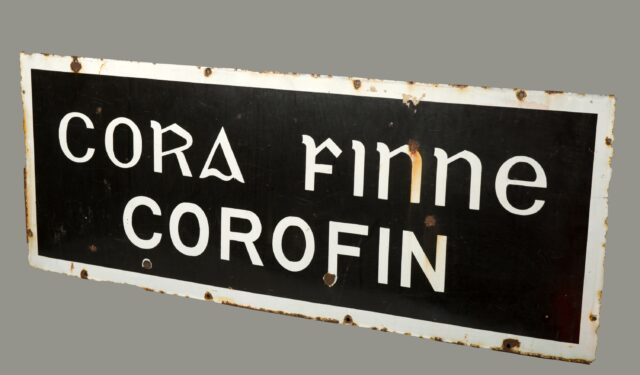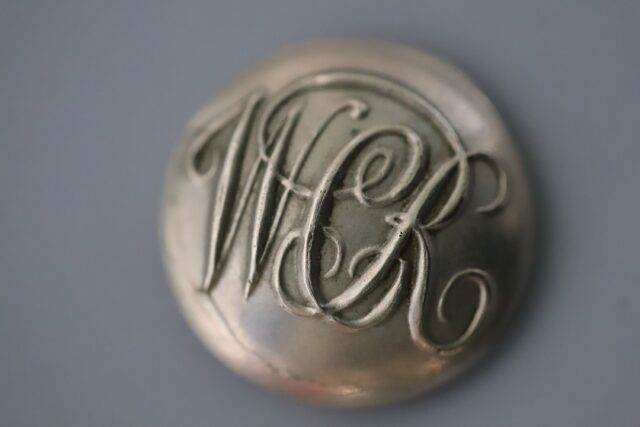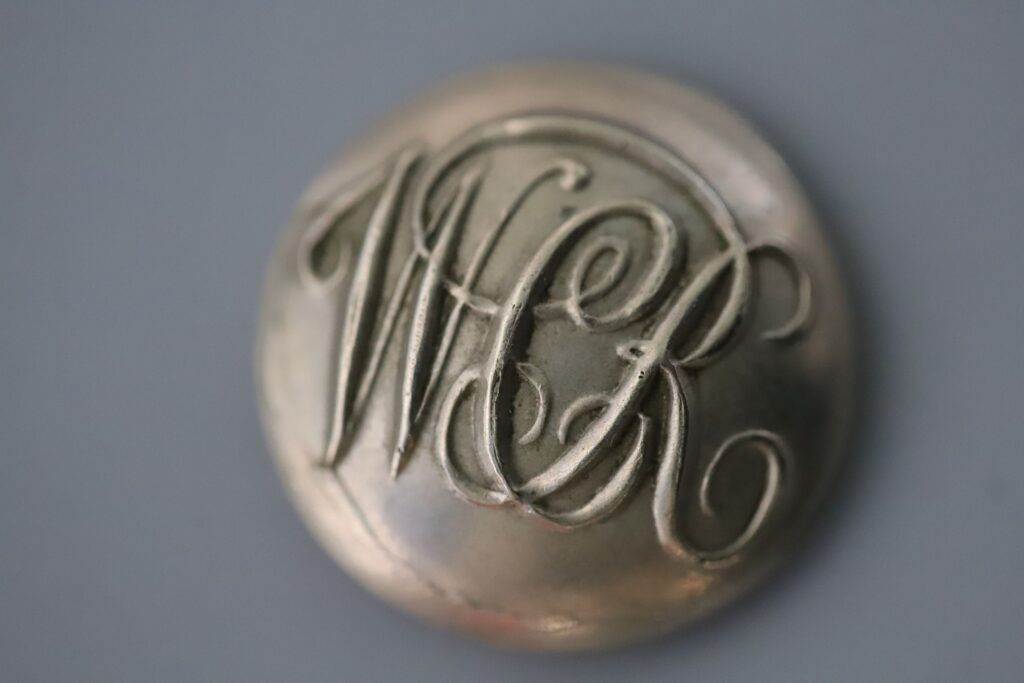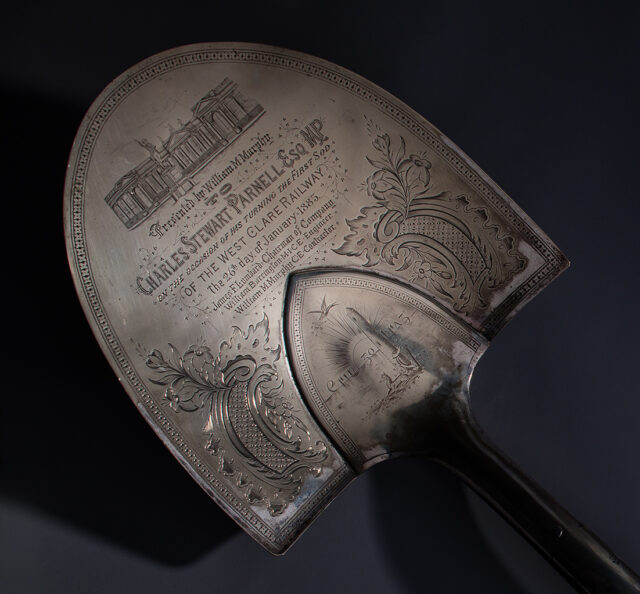The West Clare Railway (1887-1961)
The West Clare Railway was narrow gauge railway which operated in County Clare between 1887 and 1961. It ran from the county town, Ennis, to the dual termini at Kilrush and Kilkee. The railway line was one of several narrow-gauge lines built across the country under the 1883 Tramway Act. The West Clare line ran initially from Ennis to Miltown Malbay, a distance of about 43 kms, but this was extended by the South Clare Railway line in 1890, which ran from Kilrush and Kilkee to Miltown Malbay. It joined lines opened as the West Clare Railway in 1892. Although separate companies, the West Clare and South Clare Railways were effectively run as one company, with the same chairman, directors and key personnel.
The West Clare served the following stations:
- Ennis
- Lifford
- Ruan
- Corofin
- Willbrook
- Clouna
- Monreal
- Ennistymon
- Workhouse
- Lahinch
- Hanrahan’s Bridge
- Rineen
- Miltown Malbay
- Annagh
- Quilty
- Kilmurry
- Craggaknock
- Doonbeg
- Shragh
- Moyasta Junction
At Moyasta Junction, the line split for Kilrush and Cappagh Pier or Blackweir and Kilkee.
The West Clare Railway was often unreliable and frequently suffered from money problems. The railway was immortalised in song by Percy French, who wrote ‘Are you right there Michael’, parodying the railway. The song was inspired by an experience French had on 1oth August 1897 which saw him arrive so late on the West Clare, for an 8pm recital in Kilkee, that the audience had already left. The ballad, which was published in 1902, caused considerable embarrassment for the railway company.
In this blog we have crosslinked several West Clare Railway associated items in our collection.
Ceremonial Spade and Barrow

2000.88.1-2 The barrow and spade.
The turning of the first sod on the construction of the West Clare Railway line was on 26th January, 1885, even though works on the line had begun the previous November. The ceremonial sod turning was carried out by the Irish nationalist leader Charles Stewart Parnell. He used a ceremonial spade and barrow, both of which were presented to Parnell, and are currently on long term display at Clare Museum.
The spade is heavily engraved, with an image of Grattan’s Parliament indicating support for Parnell’s Home Rule agenda, underneath which is engraved:
Presented by William F Murphy
To
Charles Stewart Parnell ESQ MP
On the occasion of his turning of the first sod/
OFF THE WEST CLARE RAILWAY
26th day of January, 1885
James F Lombard, Chairman of the Company
William Barrington, M.I.C.E, Engineer
William M Murphy, C E Contractor
Erin go Bragh
2000.8.2 The heavily engraved ceremonial spade.
The barrow and spade have been in the possession of Clare County Council for many decades, although the exact date of its transfer is unclear. In a letter to D O’Keefee, Clare County Manager, by Frank Gibney, dated 3rd July 1946 it was stated that barrow and spade were in the possession of Mr John Howard Parnell. It went on to state that the spade and barrow are made of Irish silver and Irish oak. Another letter, written on 4th June 1974 to Michael Flanagan, Clare County Librarian, by P Henchy, the Director of the National Library of Ireland states:
‘…the man who presented the inscribed shovel you mention – and other items – to the nation was Captain A J P Mateer. He was the stepson of John Howard Parnell and lived in Ballybrack, County Dublin, in the 1960s. Some of the Parnell items were to go to Kilmainham and others to Ennis.’
While it is unclear at present if the spade and barrow were part of the Ennis Museum collection at Bindon Street (1965-1975), the pair were feature in an RTE television news report of the opening of the new de Valera Library and Museum, broadcast on 16th July 1975.
In the 1970s and the 1980s and perhaps into the 1990s, the ceremonial spade and barrow were used by dignitaries to turn the first sod on numerous new business and infrastructural developments in Clare, and this must account for the damage seen on its edges. Needless to say, it has been retired from that function these days.
Corofin Station Sign
Corofin railway station was 14 kms from Ennis, and some outside the village of Corofin. It was provided with a platform, and a goods store and was the first big station outside of the Ennis. It also had a short siding and passing loop, and a water tank with 145 gallon capacity.
Corofin station and its siding is mentioned in a verse of ‘Are you right there Michael’:
They find out where the engine’s been hiding
And it drags you to sweet Corofin
Says the guard: “Back her down on the siding
There’s a goods from Kilrush coming in.”
Perhaps it comes in two hours
Perhaps it breaks down on the way
“If it does,” says the guard, “by the powers
We’re here for the rest of the day!”

2010.3 Corofin Railway Station platform sign.
The Corofin railway station closed in 1961, and today the station building is a private home. The Minihan family lived next door to the railway station and were butter merchants and publicans, running the Station Bar. The Minihan family took the sign into their care after the station closed. We can tell from the bilingual nature of the sign that it dates to after Irish independence and is not the original sign that would have been put in place in the 19th century. In 1917, John Minihan from this Corofin family was a member of the Irish Republican Army (IRA) and went on hunger strike alongside Austin Stack, Sean Tracy and others.
According to Eddie Lenihan, in his book on the West Clare Railway:
Next door to the station is Minihan’s public house, a hostelry which was a necessary amenity for rail travellers. Not surprisingly it features in many stories about the line, as for example the following: A priest, rushing for his train at Ennis Station, found himself without cigarettes. A black smoker, he was gasping by the time the train pulled in at Corofin. Rushing into Minihan’s, he slapped his money on the counter and demanded his smokes, quick, before the train pulled out. No sign of hurry on the bar-woman. She slowly counted out his counted out his change penny by penny, which he stood in a fritter of impatience. ‘Hurry! I’ll be late! A hand was laid on his shoulder, a voice growled in his ear: ‘Yerra, take it easy, Father. They can’t go without us’. It was the engine-driver and fireman, in for the customary refreshment, pints of porter’.
Eddie Lenihan’s story would not have looked out of place as a verse in ‘Are ye right there Michael’.
John Minihan’s grandson Paul donated the sign to Clare Museum in 2010.
Station Master’s Hat
J J Skerritt was the Station master at Lahinch station, and this was his hat from his uniform.

2012.10 The hat from the uniform of J J Skerritt, Station Master, Lahinch Railway Station.
The station at Lahinch opened on 2 July 1887 and closed on 1 February 1961. The station had two platforms, and a large station building with a wooden veranda on the platform. A siding served a small goods shed. There was also a signal cabin, turntable and a level crossing. The station does not exist today and there is now a housing estate on the site.
Lahinch and its siding did not escape French’s ire in his song ‘Are you right there Michael’. The verse went like this:
At Lahinch the sea shines like a jewel
With joy you are ready to shout
When the stoker cries out: “There’s no fuel
And the fire’s tee-totally out!
But hand up that bit of a log there
I’ll soon have ye out of the fix
There’s a fine clamp of turf in the bog there
And the rest go a-gatherin’ sticks.
And while you’re breakin’ bits of trees
You hear some wise remarks like these.
J J Skerritt was a keen amateur golfer and came from a family of golfers of some renown. Following the closure of the West Clare Railway, J J Skerritt was employed as a CIE Road Freight Inspector.
West Clare Railway Button
This button was found in a house in the Lifford area of Ennis and had been in the possession of the family since the 1950s. The family had no connection to the West Clare Railway, so how it came in to the possession of the family is unknown. The button would have been on the uniform of an employee of the West Clare Railway and carries the stylised lettering WCR in relief. The button was manufactured in Dublin by Comyn & Sons.

2005.211.6 West Clare Railway button.
Conclusion
The West Clare Railway was closed in February 1961, to save money, and its track removed.
The items featured here are not all of the West Clare Railway objects in the museum collection, and those that remain either require photographing or more research. All but the barrow and spade are in storage at the time of writing.
References
Anonymous (2024) ‘West Clare Railway’, Narrow Gauge Railway Museum [Accessed on 29 April, 2024]
Anonymous (2024) ‘West Clare Railway’, Wikipedia [Accessed on 29 April, 2024]
Anonymous (2024), ‘Are Ye Right There Michael’, Wikepedia [Accessed on 29 April, 2024]
Farnworth, Roger, (2019) ‘The West Clare Railway – Part 1 – Ennis to Corofin’, Trams and Railways blog [Accessed on 29 April, 2024]
Farnworth, Roger, (2019), ‘The West Clare Railway – Part 2 – Corofin to Lahinch’, Trams and Railways blog [Accessed on 29 April, 2024]
Lenihan, Edmund, (2008), ‘In the Tracks of the West Clare Railway’, Mercier Press Ltd, Dublin
Acknowledgements
The author would like to thank Michael Talty, Clare Local Studies Centre, for assisting in the research for this blog post.


